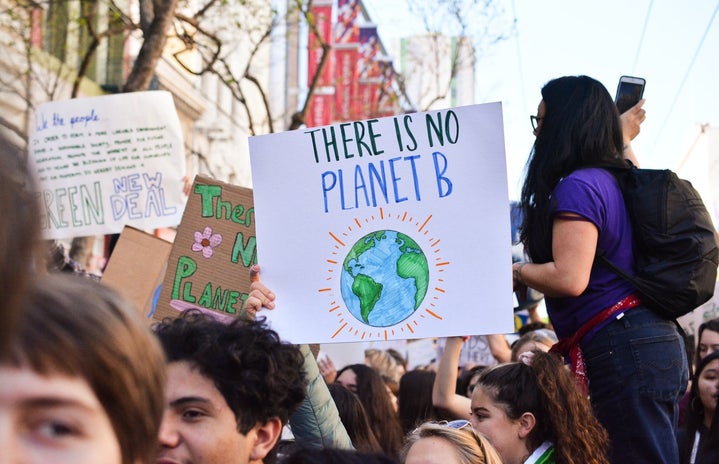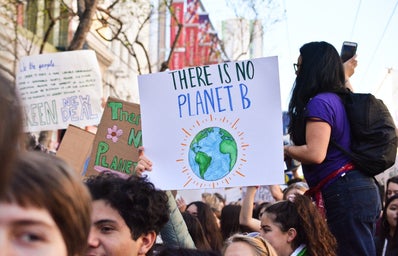Everytime I go to the grocery store, I buy Jif peanut butter. Nowadays, there are so many different brands of peanut butter, yet I consistently only buy Jif. Why? I buy Jif because it’s what I grew up on. Something you might not think about often while grocery shopping is that every single item on the shelf is trying to convince you to buy that product over another one. The loud lettering, bright colors and in-your-face packaging are all part of a scheme to get you, the consumer, to buy their product. The big J-I-F and red packaging are a way to draw my eye to the product in hopes of buying it. What if I told you there are more deceitful practice companies use to try and convince you to buy their product?
What is Greenwashing?
Greenwashing is a deceitful marketing ploy that preys on a consumer’s want to be environmentally friendly. This term was first coined by environmentalist Jay Westerveld in 1986 in response to the “save the towel” movement in hotels. Today, greenwashing tactics are designed and used to make people believe that a company is doing more to protect the environment than it really is. Greenwashing occurs in every sector of the consumer market, from groceries to cleaning products.
Greenwashing in the Real World
In 2017, FIJI water released an advertisement that exemplifies the misinformation that comes as a result of greenwashing. This advertisement shows an outline of a FIJI water bottle with nature scenery surrounding the bottle. All of this eco-friendly imagery is occurring at the same time that a little girl is saying the words, “bottled at the source, untouched by man.” This advertisement gives the consumer the impression that FIJI water is a part of nature. What the advertisement fails to mention is that FIJI water is bottled in plastic that can take up to 450 years to degrade. FIJI is attempting to convince the consumer that their product is not harming the environment in any way, when in reality, it is.
Why Does Greenwashing Matter?
Greenwashing only works if its target audience is an environmentally-focused person, which these days are a lot of people. It plays into the consumer’s desire to live a green and eco-friendly lifestyle. If a consumer buys goods they think are eco-friendly, when they really are not, it can mislead people into acting unsustainably unknowingly. Greenwashing encourages consumers to buy more products, and at the same time makes the consumer feel validated for choosing to purchase the most ethically and sustainably produced product, which is not the case. The most sustainable thing to do for the environment is to consume less. Greenwashing reinforces the idea that consumers can live a sustainable life, even when they are consuming beyond their means, which is not true.
How Can I Avoid Greenwashed Products?
- Do your research.
If you see an awesome “green” claim that seems too good to be true, do some research and see if the claims this company is making are true.
- Avoid advertisements with ambiguity.
If it uses buzzwords like “pure” or “natural” without making any real claims, it is most likely greenwashing.
- Pay attention to the packaging.
Are all of the graphics green and depict beautiful nature scenes? Is the product trying to convince you it’s environmentally friendly when it might be anything but?
- If all else fails, trust your gut.
After reading this article, you should have a good intuition about how greenwashing presents itself in marketing. If you see any products using these tactics, consider opting out using your money to support brands that use deceitful marketing tactics.


